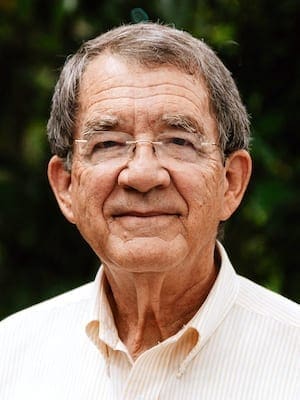Editor’s note: This article first appeared on April 18, 2011. Harris was professor of religious studies at Mercer University at the time of publication. It is republished today on Easter weekend 2019 for the insights it provides into the meaning of this “high holy day” and its implications for our lives and world.
In modern calendar time, the journey from Christmas to Easter is not a very long one – somewhere between three and four months, depending on the moon and the spring equinox.
By the time we have put away the decorations and returned the gifts that need exchanging, Ash Wednesday arrives and the countdown to Easter, known as Lent, begins.
Even in the historical perspective, the journey is relatively brief – 33 years or so, depending on how we read the hints in the gospels that help us measure the time.
One lifetime, albeit a short one, from a birth heralded as the focal point of history to a gruesome death and mysterious resurrection.
One lifetime, which drew and held together a small band of followers, which started a journey of Easter faith we still share.
One lifetime – not a very long period in the scope of history.
Our seasonal celebrations of both these events – Christmas and Easter – abbreviate a lot.
After all, there are other holidays to attend to, and they do come around once a year.
We don’t have to worry about shortchanging them because we will celebrate them again soon.
Even our view of the historical events they represent is somewhat limited by the meager information we have about them both.
Christmas is Jesus’ birth, and Easter his resurrection from the dead. That’s the beginning and end of the story; what else is there to say?
I have begun to wonder if we do in fact shortchange a reality like Easter by thinking of it as a holiday or even as a historical event.
To be sure, it is a highly significant celebration in the life of the church and is often presented as the central affirmation of the Christian faith: “He is risen!”
And its roots in concrete history remind us that the God we worship is a God who acts in history on behalf of God’s people and the rest of creation.
To remove the covenant faith of the Bible from the arena of history into some metaphysical spiritual realm is to miss one of its clearest emphases:
- “And he shall be called Immanuel – God with us”
- “And the Word became flesh and dwelt among us”
- “The Kingdom of God is within (or among) you”
- “He is risen! and you will see him in Galilee”
- “Behold, the dwelling of God is with humankind”
Our faith is a historical faith because we live in history, and it is in history that God has promised to be with us.
But, even though our faith is rooted in history, it also looks beyond the windows of history to eternity, where the mystery of God and of life has a timeless quality.
This year, when we celebrate the event of Easter, I wonder if it might be helpful to consider the resurrection of our Lord beyond the level of a historical remembrance and think of it as a spiritual reality that points beyond the event to an eternal truth we can embrace and share with the world as truly good news.
In this way of thinking, Jesus – his life, death and resurrection – becomes the incarnation of a truth that lies beyond him: the mystery of eternal life. We look with his help to a God whose nature is creative, redemptive, eternal.
Easter does not represent a change in God’s character or God’s relation to the world; it reveals what God’s character has been all along, and the way God has and will deal with the world.
But herein lies the problem: If we allow ourselves to focus too much of our attention on the specific details of the event or the pointer, we may not see the truth it is pointing to.
There is more to this truth than the volume of our claims that Christ is the savior who “makes us right with God.”
In him, God invites us not only to see his special birth, but also to see in every birth an incarnation; not only to see his agony on the cross, but also to see in every agony and death God’s participation in suffering; and not only to behold the empty tomb on Easter morning, but also to embrace a God of history and eternity, with whom all tombs are empty.
“He is risen!” indeed – And with him so is all of life. Alleluia! – thanks be to God!
Professor emeritus of religious studies at Mercer University, a member of Smoke Rise Baptist Church in Stone Mountain, Georgia, and the author of Keys for Everyday Theologians (Nurturing Faith Books, 2022).


